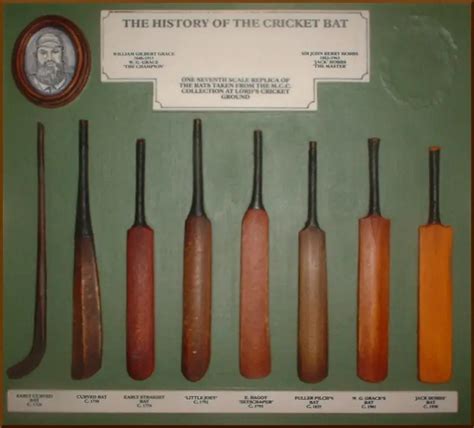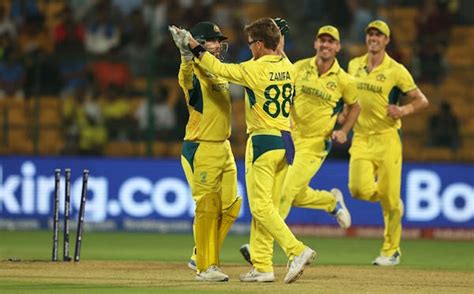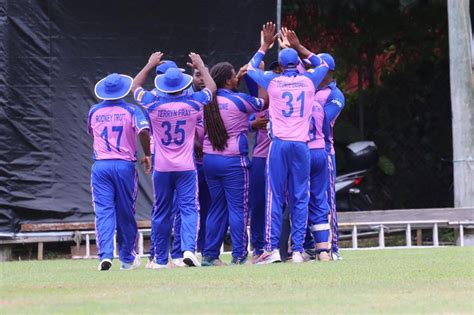Explore the evolution of cricket gear, key innovations, technological impacts, and future trends shaping modern equipment from its early days to today.The Evolution Of Cricket Gear Over Decades
Cricket has a rich heritage, and its equipment has evolved dramatically over the years to enhance player performance and safety. From rudimentary wooden bats to technologically advanced helmets, the journey of cricket gear reflects the sport’s growth and adaptation. This article delves into the fascinating transformation of cricket equipment, exploring its early days and highlighting key innovations that have shaped the modern game. We’ll also provide a comprehensive timeline of cricket gear evolution, examine the impact of technology, and discuss future trends that may redefine how the game is played. Join us as we celebrate the milestones of cricket gear evolution and discover what the future may hold for this beloved sport.
Understanding The Early Days Of Cricket Gear Evolution
The history of cricket gear dates back to the game’s inception in the 16th century. In those early days, players relied on rudimentary equipment, making the sport a test of skill rather than technology. The essentials included a simple wooden bat and a leather ball, often wrapped in string or cloth for added weight. Players often utilized their own clothing as protection, such as wearing blankets to guard against injury.
As cricket gained popularity, particularly in England, players began to experiment with their gear. The introduction of protective equipment, albeit basic, marked a significant leap forward in the evolution of cricket gear. Players started using padded gloves, which offered some degree of protection for the hands. Similarly, the first iteration of pads emerged, helping to safeguard the legs against fast bowlers.
By the end of the 19th century, cricket gear began to take on a more defined shape. The cricket bat evolved into a more standardized form, featuring a flat blade designed for optimized hitting. Boasting innovation, manufacturers began using willow wood, known for its lightweight and durable properties. As a result, cricketers experienced improved control and power in their batting techniques.
The protective aspect of cricket equipment also saw significant advancement. Helmets were introduced later in the 20th century, a crucial development that arose in response to concerns over head injuries. This shift not only emphasized the importance of safety but also reflected the changing nature of the game itself.
Overall, the evolution of cricket gear has been gradual yet impactful, shaping how the game is played today. Understanding these early developments is key to appreciating the sophisticated equipment that modern cricketers rely on.
Key Innovations That Shaped Modern Cricket Equipment
The journey of The Evolution of cricket gear is marked by various innovations that have significantly enhanced the game. These advancements not only improved performance but also prioritized the safety and comfort of players. Below are some key innovations that have shaped modern cricket equipment:
- Protective Gear: The introduction of helmets in the 1970s revolutionized the safety measures for batsmen, providing critical protection against fast bowlers. Over the years, improvements in materials and design have led to better-fitting, more protective helmets.
- Bat Technology: Traditional willow bats have undergone remarkable changes, with modern bats often incorporating lightweight materials and new shaping techniques to optimize performance while maintaining solid feel and control.
- Clothing & Footwear: The transition from heavy cotton to lightweight, moisture-wicking fabrics has transformed players’ uniforms. In footwear, advancements have led to shoes that provide enhanced grip and comfort on varying pitches.
- Cricket Ball Development: The evolution of cricket balls, including improved seam and core technology, has allowed for better durability and performance in different playing conditions.
- Training Equipment: Modern training innovations like bowling machines, smart cricket balls with sensors, and advanced analytics software have transformed player training, making it more efficient and effective.
These innovations are examples of how The Evolution of cricket gear has been driven by the need for improved performance, safety, and gameplay experience. Continuing to adapt and innovate will ensure that the game remains competitive and engaging for players and fans alike.
The Evolution Of Cricket Gear: A Timeline Overview
| Year | Gear | Description |
|---|---|---|
| 16th Century | Cricket Bat | Initially made from wood, resembling a hockey stick design, used by players against the bowler’s deliveries. |
| 18th Century | Protective Gear | Introduction of rudimentary leg guards and gloves, aiming to protect players from injury. |
| 1860 | Wicket-Keeper Pads | First designed specifically for wicket-keepers, enhancing mobility while ensuring protection. |
| 1970s | Modern Cricket Bat | Shift to lighter materials like englemann spruce, providing optimized balance and stroke-making ability. |
| 1980s | Helmet Introduction | Cricket helmets became mainstream, incorporating advanced materials for better safety against fast deliveries. |
| 1990s | Composite Materials | Incorporation of fiberglass and carbon fiber in the design of pads and helmets for increased durability. |
| 2000s | High-Tech Equipment | Emergence of technology in gear with features like moisture-wicking fabrics and 3D printing of protective gear. |
| 2020s | Smart Cricket Gear | Integration of sensors in bats and clothing that measure performance metrics, enhancing player analysis. |
The importance of The Evolution of cricket gear is highlighted through these timelines. Each decade has brought innovations that not only enhance performance but also ensure safety, reflecting the sport’s overall growth and adaptation to modern demands.
Impact Of Technology On The Evolution Of Cricket Gear
The continuous advancement in technology has significantly influenced The Evolution of cricket gear, leading to improvements in both safety and performance. Innovations in materials, design, and manufacturing processes have transformed traditional equipment into high-tech gear that meets the demands of modern cricket.
One of the most notable changes has been in the materials used for helmets and pads. Traditional leather is now frequently replaced with advanced synthetic materials that provide better impact resistance while remaining lightweight. This shift not only enhances player safety but also improves comfort during long matches.
Moreover, the introduction of technology in bats has revolutionized the way cricketers perceive their equipment. The development of power-balanced bats, which use modern materials combined with traditional craftsmanship, enables players to achieve better control and power in their strokes. Additionally, technologies such as 3D printing and computer-aided design (CAD) have allowed for more precise specifications tailored to individual player preferences.
Another critical area of technological impact is in training methods. Wearable technology and performance analytics have become essential in contemporary cricket. Players can now track their physical metrics and analyze their performance in real-time, which directly influences their practice sessions and overall game strategies.
Furthermore, data analytics tools help teams make informed decisions regarding player fitness, game tactics, and equipment choices. By analyzing vast amounts of data, teams can tailor their training and choose gear that enhances their chance of success on the field.
As technology continues to evolve, the future of cricket gear looks promising. The combination of cutting-edge science and traditional craftsmanship signifies that The Evolution of cricket gear will only get better, providing players with safer and more effective equipment on the pitch.
Future Trends In The Evolution Of Cricket Equipment
The world of cricket continues to see changes, not just in the gameplay but in the gear players use. As we look ahead, several trends are expected to shape the evolution of cricket equipment over the coming years.
One significant trend is the incorporation of advanced materials aimed at enhancing performance while ensuring player safety. Lightweight composites are likely to replace traditional materials, providing players with better maneuverability without compromising on protection. Brands are already experimenting with fabrics that offer increased durability while remaining flexible.
Another aspect to consider is the integration of technology into cricket gear. Wearable technology, such as smart gloves and sensors embedded in bats, will become commonplace. These innovations will not only track performance metrics but also help in injury prevention through real-time data analysis.
Additionally, customizability is set to gain momentum. Players are increasingly looking for gear tailored to their personal preferences, which means manufacturers will likely offer more options for personalization in terms of weight, balance, and fit. This trend will encourage players to play with equipment that truly feels like an extension of themselves.
As sustainability becomes a pressing global concern, cricket equipment manufacturers are likely to adopt eco-friendly practices. From using recycled materials in gear production to embracing sustainable manufacturing processes, the evolution of cricket equipment will align with environmental responsibilities.
As these trends materialize, the future of cricket gear promises to not only elevate the sporting experience but also ensure that players are better equipped to perform at their best while staying safe.
Frequently Asked Questions
What are the key milestones in the evolution of cricket gear?
Key milestones include the introduction of protective equipment like batting pads in the 1930s, the use of helmets in the 1970s, and advancements in materials leading to modern lightweight gear.
How has technology impacted cricket gear?
Technology has led to the development of advanced materials such as Kevlar and carbon fiber, which enhance player safety and performance by offering better protection and reducing weight.
What role did player feedback play in the evolution of cricket gear?
Player feedback has been crucial in the design and development process, as players’ experiences and preferences help manufacturers create gear that meets the demands of modern cricket.
How has the design of cricket bats changed over the years?
The design of cricket bats has evolved from traditional shapes made from willow to modern profiles that optimize weight distribution and forge stronger edges for powerful shots.
What are some of the most significant advancements in protective gear?
Significant advancements include the introduction of advanced helmets with faceguards, lightweight pads that provide superior mobility, and gloves that offer enhanced grip and flexibility.
Why is the evolution of cricket gear important for the sport?
The evolution of cricket gear is essential for enhancing player safety, improving performance, and making the game more accessible to players of all levels.
How does the evolution of gear reflect changes in playing styles in cricket?
The evolution of gear reflects the shift towards aggressive and dynamic playing styles, leading to demand for equipment that supports faster, more powerful plays and greater protection against fast bowlers.









